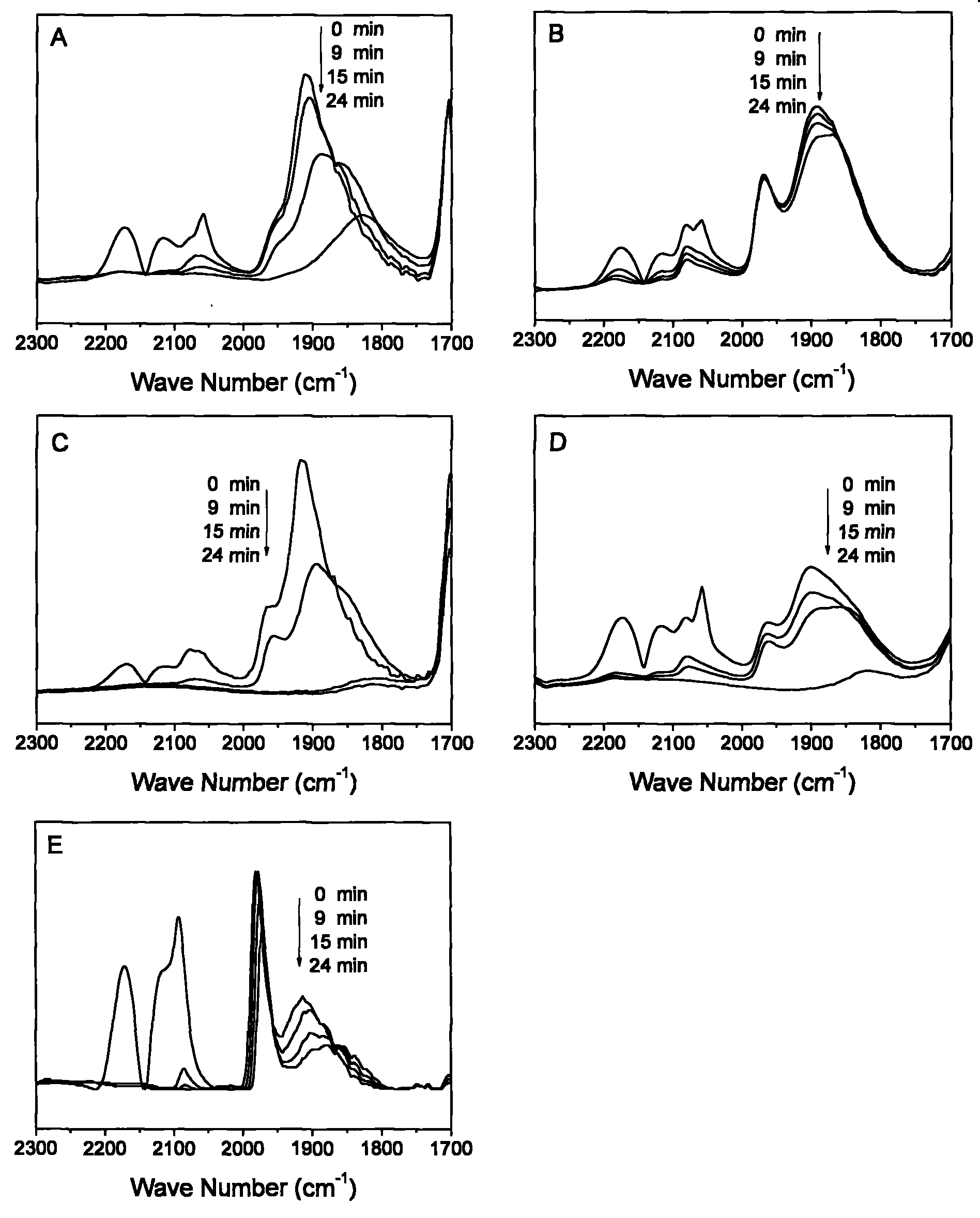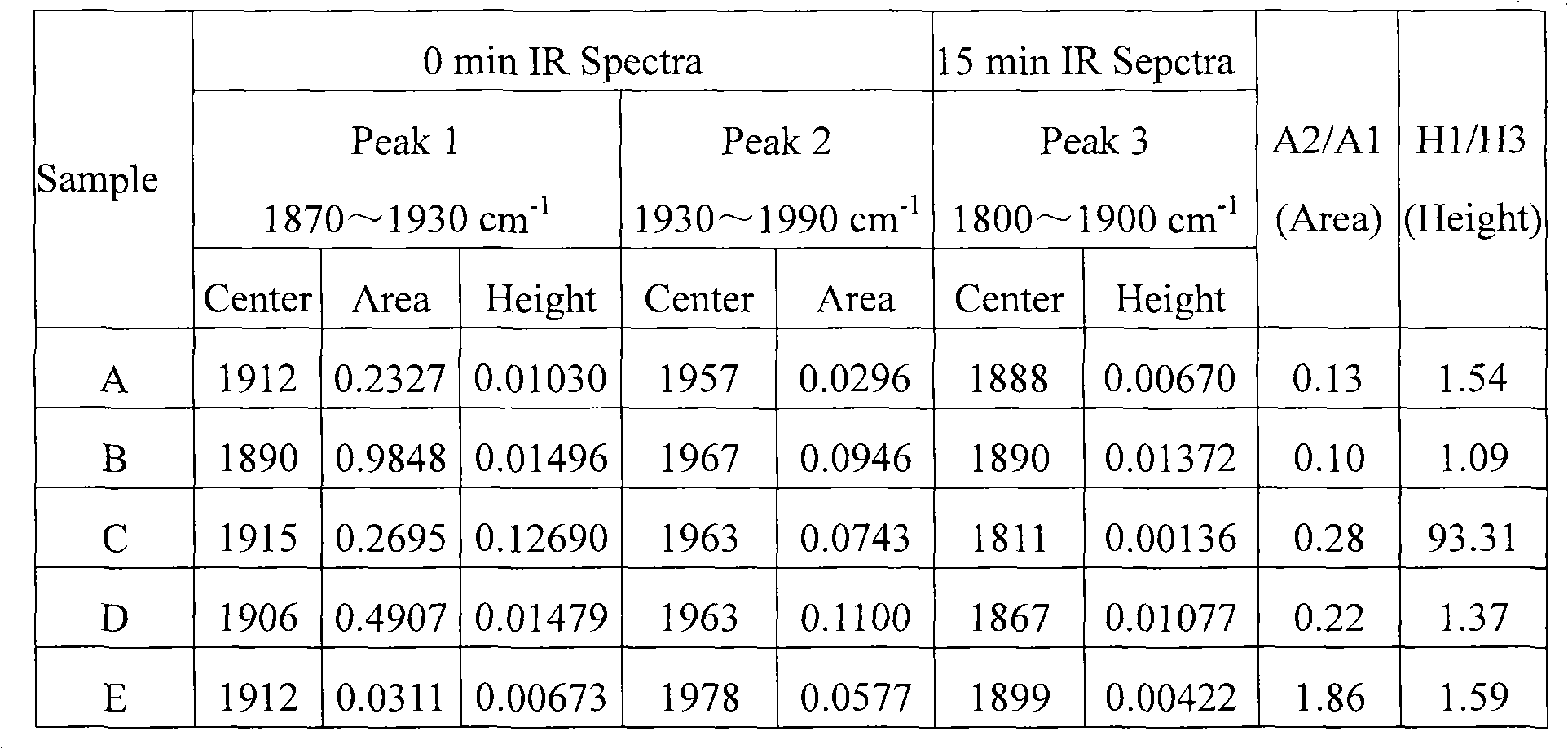Selective hydrogenation method for allylene and allene in propylene material flow
A technology for selective hydrogenation and propadiene, applied in chemical instruments and methods, metal/metal oxide/metal hydroxide catalysts, hydrogenation to hydrocarbons, etc., can solve the problems of complex catalyst composition and cumbersome preparation process, and achieve High propylene selectivity, high reactivity, energy saving effect
- Summary
- Abstract
- Description
- Claims
- Application Information
AI Technical Summary
Problems solved by technology
Method used
Image
Examples
Embodiment 1
[0040] Take 13.5ml 10mg / ml PdCl 2 Solution, add 1mol / L NaOH solution dropwise to adjust the pH to 5.6, then spray to 100.0gAl 2 o 3 Spherical carrier surface, use 20ml of 50% v / v isopropanol aqueous solution to wet the carrier, and use it under vacuum 60 The Coγ radiation source was irradiated at room temperature for 15 hours, and the absorbed dose rate was 35Gy / min. After irradiation, the sample was placed in an oven, and dried at 80° C. and 120° C. for 12 hours in turn to obtain the catalyst A, which had a gray-black appearance and a Pd content of 0.135 wt%.
Embodiment 2
[0042] Take 30ml 10mg / ml PdCl 2 solution, sprayed to 100.0g of La and K modified Al 2 o 3 Spray 5ml of 1mol / L NaOH solution on the surface of the toothed spherical carrier, use 20ml of 50% v / v isopropanol aqueous solution to wet the carrier, and use it under vacuum 60 The Coγ radiation source was irradiated at room temperature for 15 hours, and the absorbed dose rate was 70Gy / min. After irradiation, the sample was placed in an oven, and dried at 80° C. and 120° C. for 12 hours in turn to obtain the catalyst B, which had a gray appearance and a Pd content of 0.300 wt%.
PUM
| Property | Measurement | Unit |
|---|---|---|
| specific surface area | aaaaa | aaaaa |
| specific surface area | aaaaa | aaaaa |
| specific surface area | aaaaa | aaaaa |
Abstract
Description
Claims
Application Information
 Login to View More
Login to View More - R&D
- Intellectual Property
- Life Sciences
- Materials
- Tech Scout
- Unparalleled Data Quality
- Higher Quality Content
- 60% Fewer Hallucinations
Browse by: Latest US Patents, China's latest patents, Technical Efficacy Thesaurus, Application Domain, Technology Topic, Popular Technical Reports.
© 2025 PatSnap. All rights reserved.Legal|Privacy policy|Modern Slavery Act Transparency Statement|Sitemap|About US| Contact US: help@patsnap.com



